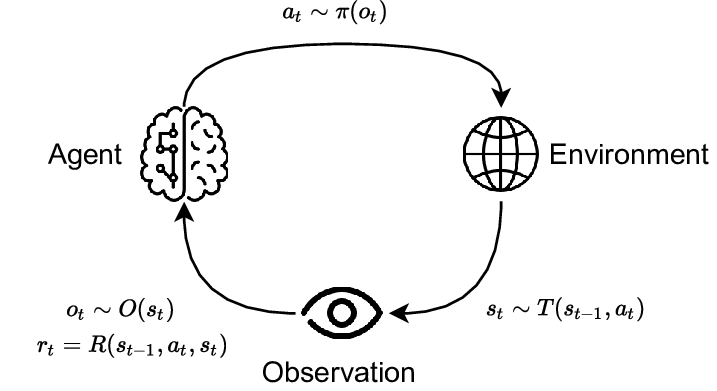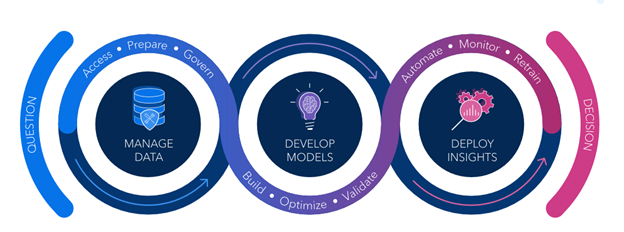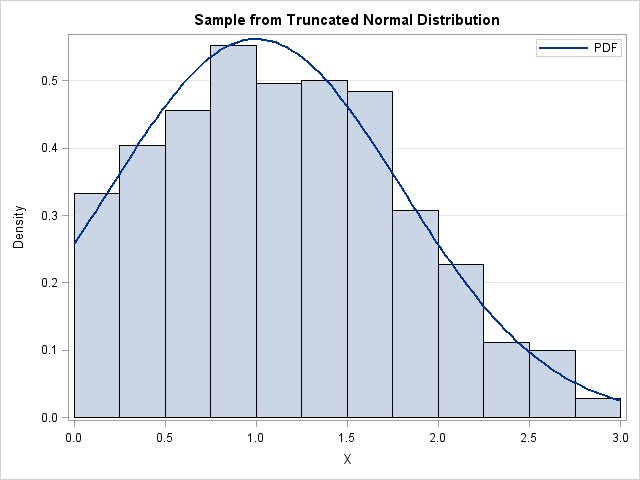All Posts

Who is responsible for ensuring that new AI technologies are fair and ethical? Does that responsibility land on AI developers? On innovators? On CEOs? Or is the responsibility more widespread? At SAS, we believe that it is everyone’s duty to innovate responsibly with AI. We believe that adhering to trustworthy

In a previous article, I showed how to overlay a density estimate on a histogram by using the Graph Template Language (GTL). However, a SAS programmer asked how to overlay a curve on a histogram when the curve is not a density estimate. In this case, the vertical axis for

Hi! I’m Daniel, a technical intern at SAS and a student at North Carolina State University. Reinforcement learning is an exciting strategy that is versatile and broadly useful in the fields of data science and machine learning. I implemented an intelligent Minesweeper-playing model using SAS reinforcement learning, and this article

In the past few years, disruption and uncertainty have become the norm. It feels like we're living through decades’ worth of change, in sometimes just a few days. And it’s not slowing down. Business priorities, though, remain unchanged: Increase revenue. Operate more efficiently. Meet customer expectations. It's increasingly clear that

はじめに 統計的因果推論における1つの達成目標として「介入を行った場合には行わなかった場合と比較してどの程度結果(アウトカム)が変わったのか」という因果的な疑問に対し、定量的に答えることが挙げられるかと思います。以前のコラムでは、こういった因果効果を数学的・統計学的に議論していくために潜在アウトカムという考え方を導入し、その値を推定していくために重要ないくつかの仮定について紹介を行いました。この因果効果の推定の手法には様々なものがありますが、次回以降のコラムで紹介をする交絡調整に基づく因果効果の推定手法 (e.g., 回帰、層別化、傾向スコアを用いた手法)では、興味のある因果効果の推定値をバイアスなく得るためには、交絡や選択バイアスの調整に必要な全ての変数が完全に特定・測定されているという仮定が成立している必要があります。この仮定はデータからその成立を検証することはできず、もしもいずれかが成立しない場合には得られる推定値にはバイアスが含まれ、いわゆる残差交絡 (redidual confounding) が存在する状況となります。現実的に仮定が全て厳密に成立するケースというのは比較的稀ですので、そのような意味では大部分の研究結果(特に観察研究)・解析結果には一定のバイアスが含まれているとみることもできるかと思います。ただし交絡調整に基づく手法がダメだと言っているわけではなく、調整が不完全ながらもバイアスを軽減することは十分に意義があり、また最終的に結果に含まれるであろうバイアスの大きさとその方向(過大評価 or 過小評価)を議論することが重要かと思います。 今回のコラムでは、操作変数法(instrumental variable methods, IV methods)という因果効果の推定手法について紹介と解説を行っていきます。この推定手法は、操作変数 (instrumental variable, instrument) と呼ばれるいくつかの条件を満たす特殊な変数を利用することで因果効果の推定を行う手法になります。医学分野では、先行研究の結果(e.g., 医学的な知見)から交絡因子となりうる変数の特定・測定が比較的容易であることから先ほど言及した交絡調整に基づく推定手法が用いられるケースが比較的多いですが、経済学や社会科学といった分野ではそもそもの特定が出来なかったり、仮に交絡因子であろうと見込んだ場合であってもそれを測定することができないケースが非常に多く存在します。そのため交絡調整に基づかない手法である操作変数法というのは経済学や社会科学において、特にその理論が発展してきたという歴史的な背景があります。なお詳細については後述しますが、操作変数法は交絡因子の測定を必要としないというメリットもある一方、いくつかの検証不可能な仮定に基づく手法です。したがって、解析を行う研究・データにおいて因果効果の推定のために要求される仮定の成立を認めることがどの程度妥当であるかの議論が他の手法と同様に必要であることにご注意ください。 操作変数の3条件 操作変数法では、ある介入AのアウトカムYに対する因果効果を推定するために以下の3つの条件を満たす変数Zを利用します。この変数Zは操作変数 (instrumental variable, instrument) と呼ばれます。 操作変数の3条件 (Theree instrumental conditions) Z is associated with A ZはAと関連する Z does not affect Y except through its potential effect on Y ZはYに対してAを介した以外の効果を持たない Z

El último jueves de abril de cada año se celebra el Día Internacional de las Niñas en las TIC (Tecnologías de la Información y la Comunicación). Es decir, en 2023 esta fecha es el 27 de abril. También en este mes, el cuarto jueves de abril se celebra en América

In her first blog post, SAS' Mu He shows you how to train a convolutional neural network that can accurately detect patients with COVID-19 using the transfer learning technique.

I see the term resilience in a lot of business literature these days. Intuitively, it makes sense. After a pandemic, global supply chain disruptions and resulting economic fragility, executives understandably consider adaptability, durability and how best to operate with a strength of character – all attributes that define resilience. Many

Eventos extremos aumentam o volume de sinistros acionados, mas a velocidade com que essas variáveis estão mudando faz com que elas ainda são sejam capturadas completamente na análise de risco Na contratação de um seguro, seja ele auto, residencial ou de vida, é natural que as seguradoras peçam muitas informações

You can start learning about ModelOps and SAS Model Manager now. Compare the various educational resources provided by SAS according to your learning preference.

In honor of Women's History Month, SAS organized various events to celebrate and empower women. Keep reading to see how we highlighted women's contributions and achievements in various fields. Fair Play discussion Fair Play makes the “invisible care” work historically held by women visible, inspiring a more balanced future for

What do you do when you want that extra dessert or handful of chips, but you’ve reached a point where junk foods are getting in the way of your health goals?

When the SAS statistical graphics (SG) procedures were designed in the early 2000s, a goal was to create a comprehensive Graph Template Language (GTL) and leverage the GTL by using SG procedures that perform common tasks easily without having to write any GTL. This project was hugely successful, and "ODS

For several years Kim Andreaus and I have taught Powerful Tools for Caregivers, an evidence-based program that teaches skills for self-care and stress management. One of the lessons from the class that always resonates with me is the concept of guilt versus regret. Guilt is shame-based and implies there was

La ciencia ficción ha utilizado la premisa de que existen universos paralelos en los que se viven realidades distintas, detonadas por decisiones o eventos excepcionales. En uno de ellos, los personajes estarían experimentando cosas únicas y distintas a las de otra dimensión que corre a la par. Los protagonistas de












